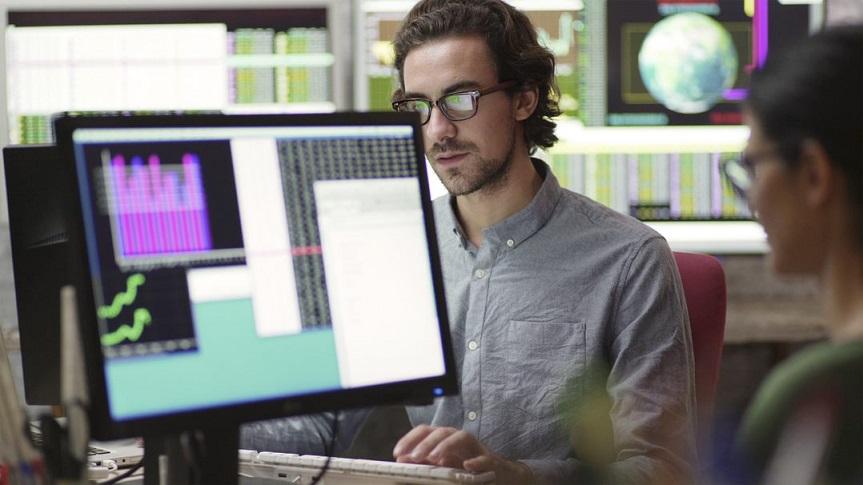
Submitted by Anonymous on Mon, 10/01/2022 - 10:20
Digital twins are not just a useful resource for understanding the here-and-now of built assets. If an asset changes condition or position over its lifecycle, historical data from remote sensors can make this change visible to asset managers through a digital twin. However, this means retaining and managing a potentially much larger data set in order to capture value across the whole life of an asset. In this blog post, Dr Sakthy Selvakumaran, an expert in remote sensing and monitoring, tells us about the importance of curation in the processing of high-volume built environment data.
There are many sources of data in the built environment, in increasing volumes and with increasing accessibility. They include sensors added to existing structures – such as wireless fatigue sensors mounted on ageing steel bridges – or sensors attached to vehicles that use the assets. Sources also include sensing systems including fibre optics embedded in new structures to understand their capacity over the whole life of the asset. Even data not intended for the built environment can provide useful information; social media posts, geo-tagged photos and GPS from mobile phones can tell us about dynamic behaviours of assets in use.
Remote sensing: a high-volume data resource
My research group works with another data source – remote sensing – which includes satellite acquisitions, drone surveys and laser monitoring. There have been dramatic improvements in spatial, spectral, temporal and radiometric resolution of the data gathered by satellites, which is providing an increasing volume of data to study structures at a global scale. While these techniques have historically been prohibitively expensive, the cost of remote sensing is dropping. For example, we have been able to access optical, radar and other forms of satellite data to track the dynamic behaviour of assets for free through open access policy of the European Space Agency (ESA).
The ESA Sentinel programme’s constellation of satellites fly over assets, bouncing radar off them and generating precise geospatial measurements every six days as they orbit the Earth. This growing data resource – not only of current data but of historical data – can help asset owners track changes in the position of their asset over its whole life. This process can even catch subsidence and other small positional shifts that may point to the need for maintenance, risk of structural instability, and other vital information, without the expense of embedding sensors in assets, particularly where they are difficult to access.
Data curation
One of the key insights I have gained in my work with the University of Cambridge’s Centre for Smart Infrastructure and Construction (CSIC) is that data curation is essential to capture the value from remote sensing and other data collection methods. High volumes of data are generated during the construction and operational management of assets. However, this data is often looked at only once before being deleted or archived, where it often becomes obsolete or inaccessible. This means that we are not getting the optimal financial return on our investment on that data, nor are we capturing its value in the broader sense.
Combining data from different sources or compiling historical data can generate a lot of value, but the value is dependent on how it is stored and managed. Correct descriptions, security protocols and interoperability are important technical enablers. Social enablers include a culture of interdisciplinary collaboration, a common vision, and an understanding of the whole lifecycle of data. The crucial element that ensures we secure value from data is the consideration of how we store, structure and clean the data. We should be asking ourselves key questions as we develop data management processes, such as: ‘How will it stay up to date?’ ‘How will we ensure its quality?’ and ‘Who is responsible for managing it?’
Interoperability and standardisation
The more high-volume data sources are used to monitor the built environment, the more important it is that we curate our data to common standards – without these, we won’t even be able to compare apples with apples. For example, sometimes when I have compared data from different satellite providers, the same assets have different co-ordinates depending on the source of the data. Like ground manual surveying, remote measurements can be made relative to different points, many of which assume (rightly or wrongly) a non-moving, stationary point. Aligning our standards, especially for geospatial and time data, would enable researchers and practitioners to cross-check the accuracy of data from different sources, and give asset managers access to a broader picture of the performance of their assets.
Automated processing
The ever increasing quantity of data prohibits manual analysis by human operators beyond the most basic tasks. Therefore, the only way to enable data processing at this large scale is automation, fusing together remote sensing data analysis with domain-specific contextual understanding. This is especially true when monitoring dynamic urban environments, and the potential risks and hazards in these contexts. Failure to react quickly is tantamount to not reacting at all, so automated processing enables asset owners to make timely changes to improve the resilience of their assets. Much more research and development is needed to increase the availability and reliability of automated data curation in this space.
If we fail to curate and manage data about our assets, then we fail to recognise and extract value from it. Without good data curation, we won’t be able to develop digital twins that provide the added value of insights across the whole life of assets. Data management forms the basis for connected digital twins, big data analysis, models, data mining and other activities, which then provide the opportunity for further insights and better decisions, creating value for researchers, asset owners and the public alike.
You can read more from the Satellites project by visiting their research profile.
This research forms part of the Centre for Digital Built Britain’s (CDBB) work at the University of Cambridge. It was enabled by the Construction Innovation Hub, of which CDBB is a core partner, and funded by UK Research and Innovation (UKRI) through the Industrial Strategy Challenge Fund (ISCF).
To join the conversation with others who are on their own digital twin journeys, join the Digital Twin Hub.

